The Prince of Persia franchise has had its share of highs and lows ever since Jordan Mechner’s iconic game was released in 1989. The franchise reached its pinnacle with 2003’s Sands of Time and has stumbled more than succeeded since. I loved the 2008 reboot even though the ending of the game was a bummer. However, today we are talking about Prince of Persia: The Lost Crown, a 2.5D Metroidvana. Let’s cut the chase, if you love games like Metroid Dread, Ori and the Blind Forest, Guacamelee!, and more, then Prince of Persia: The Lost Crown is definitely for you! It has great combat, some breathtaking traversal and a story that may not start on the right foot but has a decent conclusion!
Story: An Eastern folklore with a twist
You don the role of Sargon, one of the Immortals on a mission to rescue the Prince of Persia who has been kidnapped. There has been some hate online about the fact that you don’t play as the Prince of Persia himself, but trust me when I tell you that the story IS about the Prince of Persia and that’s as far as I will go without spoiling the story. Also, as an FYI, in Mechner’s original game, the hero wasn’t exactly a prince.
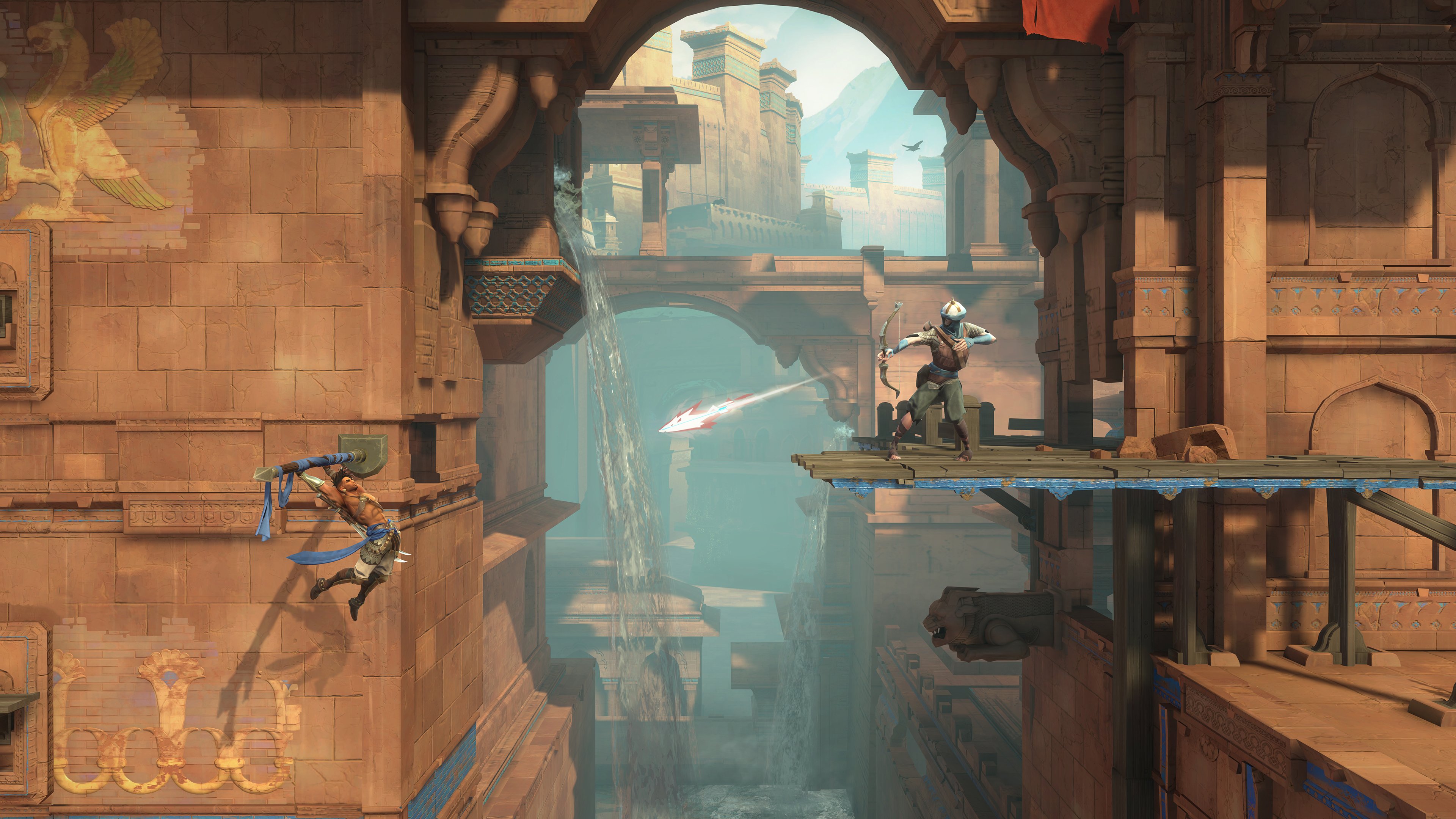
Your journey to rescue the prince leads you to Mount Qaf where time isn’t a river that flows ‘swift and sure in one direction’ but rather ‘an ocean in a storm!’ Yes, Mount Qaf is a place where there are activities affected by the nonlinear passage of time and the details are revealed as the story progresses. It is a modern slightly broader take on the butterfly effect and one that I enjoyed.
Like most modern games, you also have some side quests to tackle and some of these are quite interesting especially one that requires you to find all the secrets in the game or another in which you need to avenge a grieving mother. There is one more that has you searching for the moon. It might sound bizarre, but in the context of the setting of the game, they kinda make sense.
Overall, the story is something I enjoyed especially the story of the small boy you encounter and some of the twists in the main plot. After some revelations, the plot becomes a little predictable, but enjoyable nonetheless.
Gameplay: A True Warrior Within
It’s been a while since a game had me at the edge of my seat attempting to make the perfect jump across a set of traps using a host of abilities and I loved it. Ori and the Blind Forest and Guacamelee! are my all-time favourite Metroidvanias when it comes to traversing complicated environments and now I am happy to add Prince of Persia: The Lost Crown to that list. The game starts easy giving you some platforms to jump on and avoid traps but as you progress the parkour gets challenging with new abilities you unlock. The abilities include some standard stuff such as the ability to dash, double jump, pull yourself to certain environmental objects and more which I won’t spoil here. Mix these up with some traps and really smart environmental puzzles, and you will need more than a few tries to master movement.
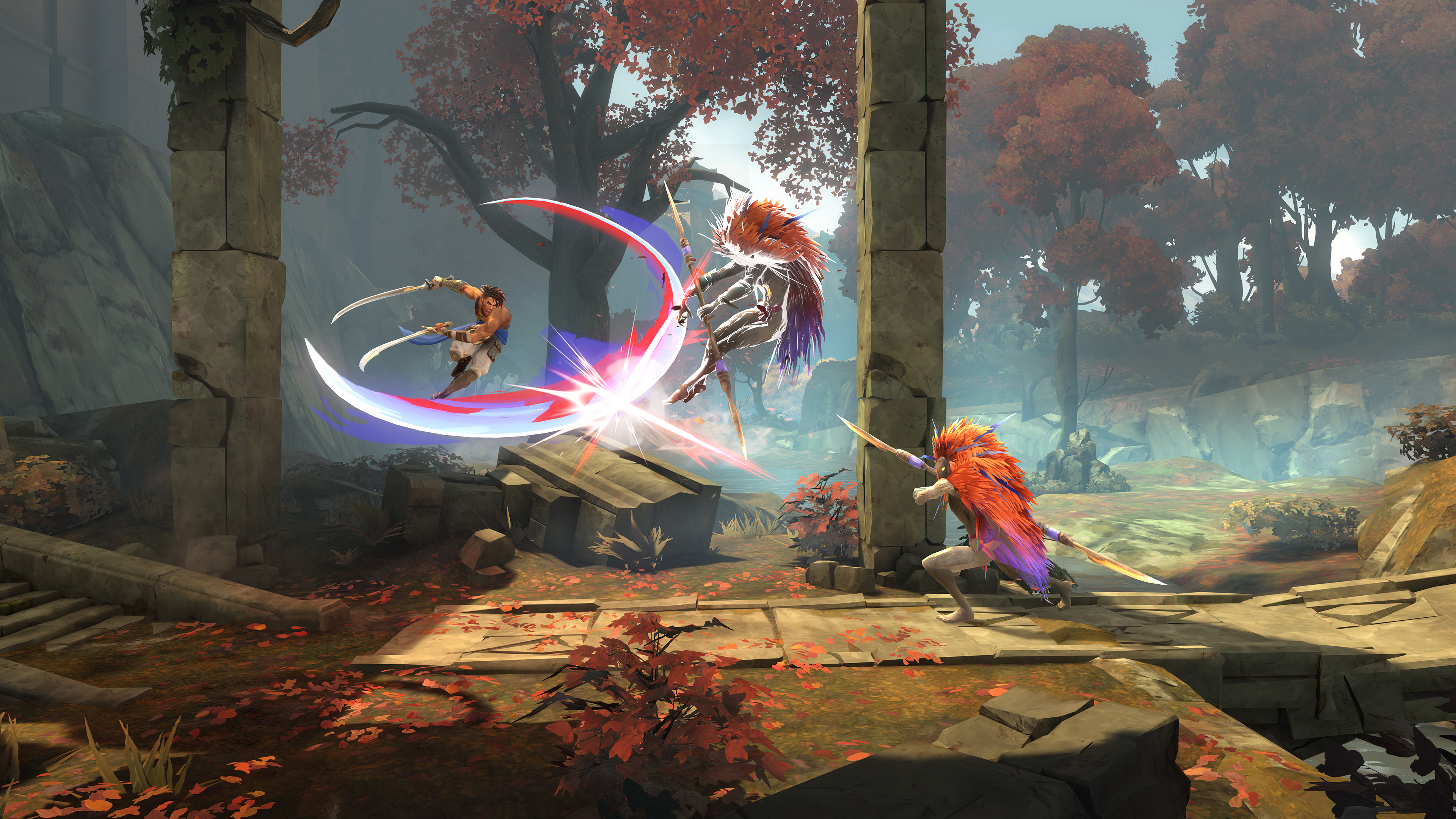
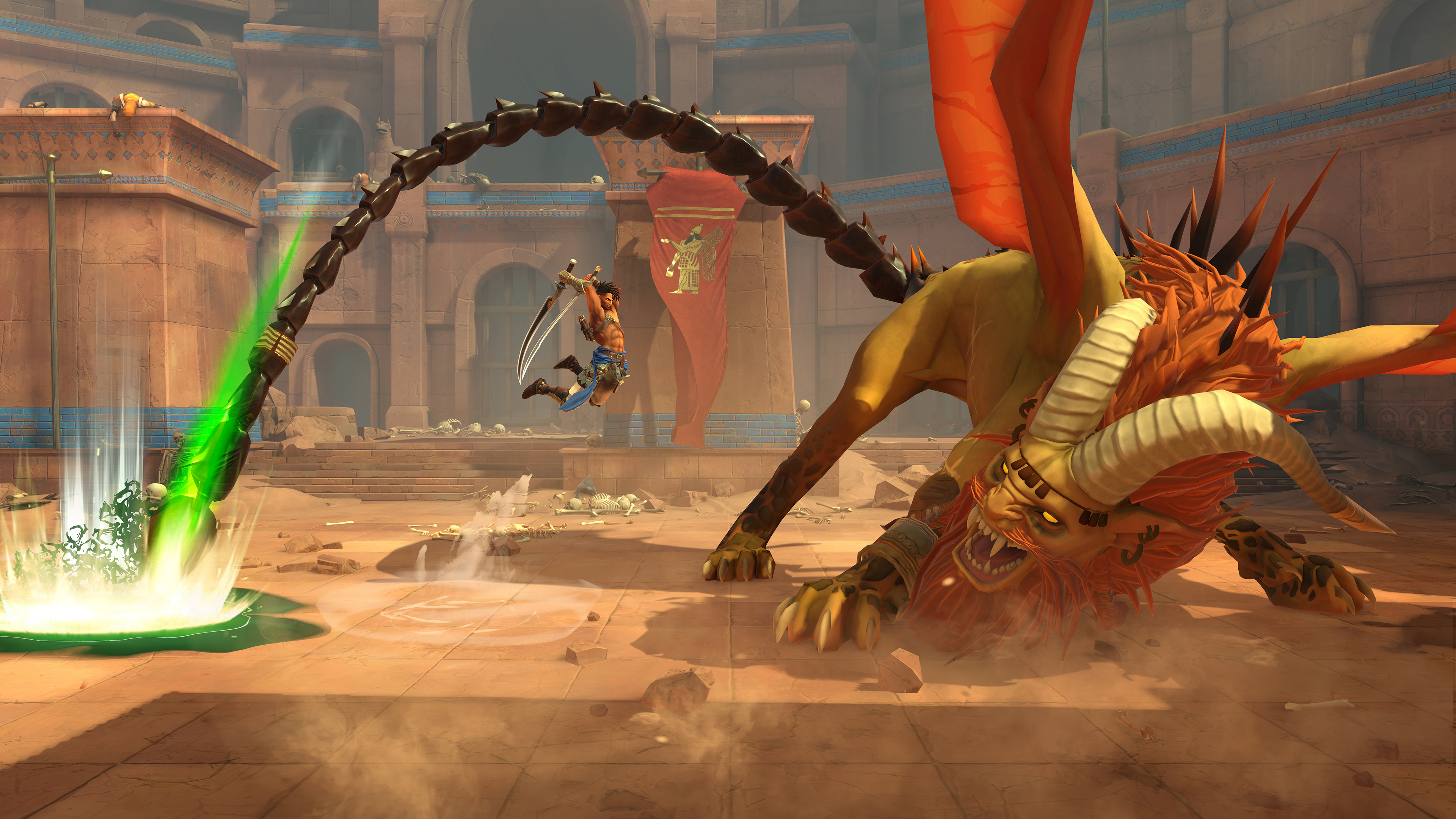
Speaking of Wak-Wak trees, they are scattered throughout the world and act as save points for the player letting you equip your amulets (that grant you some passive abilities) and Athra Surges. Some of the Wak-Wak trees are accompanied by fast travel points as well. Considering how huge the map is, I wish the Wak-Wak tree’s themselves doubled up as fast travel points, but it’s a small niggle in an otherwise great game.
When it comes to the enemies, there are more than 65 unique enemies in the game with almost 10 boss fights keeping the experience fresh with every new environment you explore.
Speaking of the map, it is HUGE! There are more than 10 explorable unique areas and you can easily get lost especially when pursuing the main quest. Thankfully, there are a bunch of gameplay elements that make the map more accessible.
There is a “Guided Mode” that marks your next main objective on the map and you have an idea of the general direction you need to go in. It is very helpful for newcomers to the genre and can be switched off if you want the more organic Metroidvania experience.
Another great addition is the “Memory Shards”. If you reach a spot on the map that needs a new ability to access, you can take a screenshot of that place on the map and return to it later. At any point, you can open the map and see the screenshot you have taken to check if you have the required ability to access the location. It’s a simple thing but an immensely helpful one as helps prevent unnecessary backtracking which would happen if you simply placed a marker on the map.
In addition to the standard 4 difficulty modes (Rookie, Warrior, Hero and Immortal), you can customise each aspect of the game for a custom experience. For example, you can turn off environmental damage completely but keep the enemy difficulty very high if that’s how you like to play. Custom difficulty in my opinion is the best accessibility feature, especially for aging gamers like me who find normal a little too challenging (aging reflexes) and easy mode a little too easy.
Other accessibility options include customising the visuals (high contrast mode, etc), audio and text along with remapable controls.
Overall the gameplay of Prince of Persia: The Lost Crown is fantastic. The combat is easy to learn, but some of the slicker combos will take some practice to master. The level design is a parkour delight and the overall structure is fun to navigate, thanks to the varied environment.
Graphics and Sound
I reviewed the game on a PS5 and it runs at a butter smooth 4K 120FPS. Considering the game runs at 1080p 60FPS in docked mode on the Nintendo Switch, it isn’t all that demanding, but I’ll leave the console comparison and visual analysis to the experts at Digital Foundry.
In my opinion, Ori and the Will of the Wisps is a stunning game even today and Prince of Persia: The Lost Crown stands tall alongside it. The game has a very anime art style especially when executing some of the special combat abilities. The background looks like a watercolour artistic background brought to life. Each environment has a distinct art style to it, be it the Sacred Archives which looks like an Egyptian hall of learning, the Raging Sea which is a stormy picturesque ocean straight out of Moby Dick and the Crossroads of Time which is something out of a fantasy novel with broken environmental elements depicting frozen time. Exploring each environment with its unique style feels fresh and engaging every time.
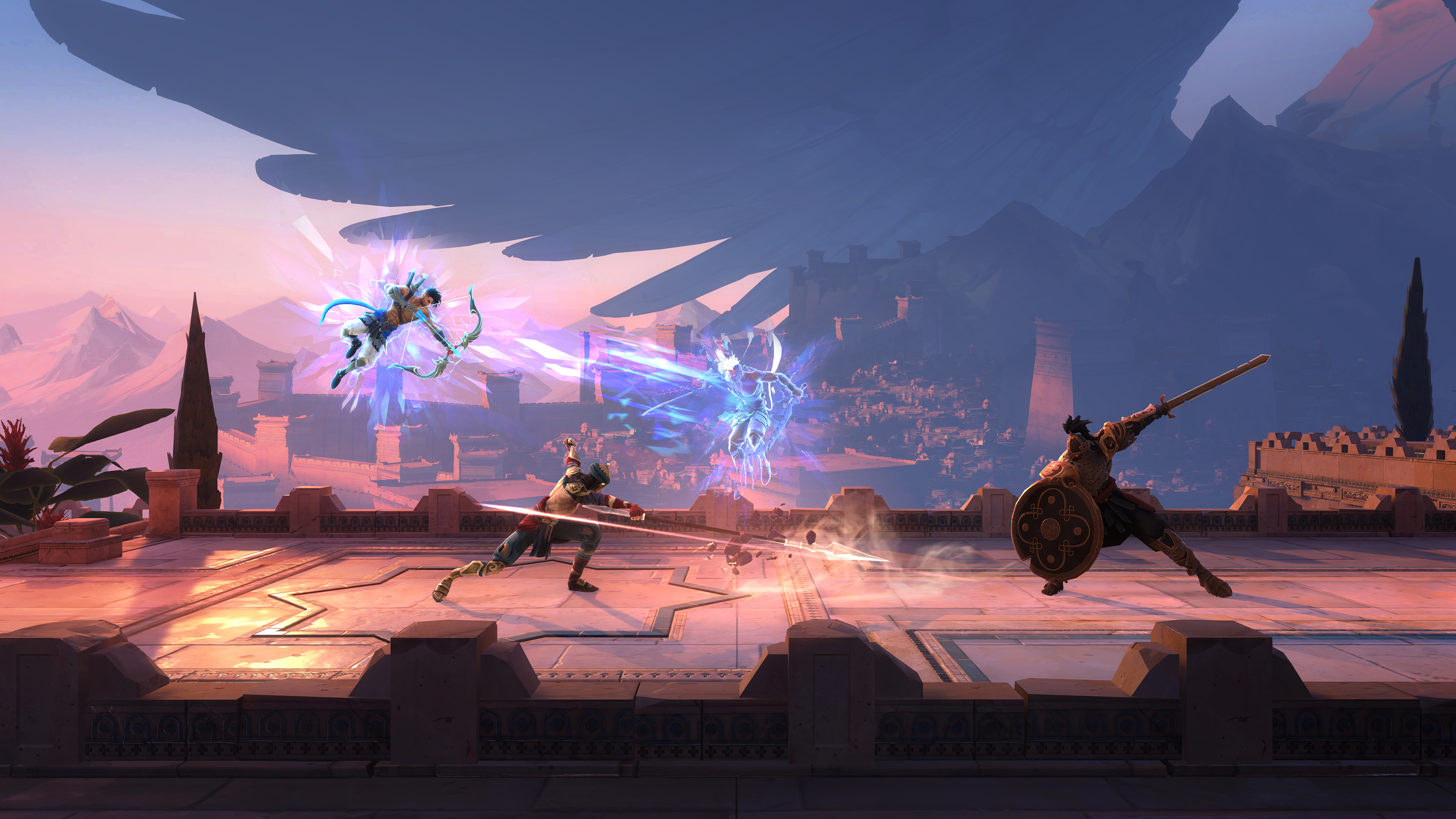
Moving over to the sound, when the game started, I thought the voice acting felt too Western for my liking especially when you compare it to Prince of Persia: The Sands of Time. But the voice acting grew on me as the game passed, so no complaints there. For those interested, Farsi is a language option as well if you want a more authentic Persian experience, but I stuck to English. I wish the voice acting accent was more akin to how it is portrayed in Ghost of Tsushima, but again, this is me nitpicking. The game is available in 5 languages voice acting including English, French, Spanish, German and Farsi.
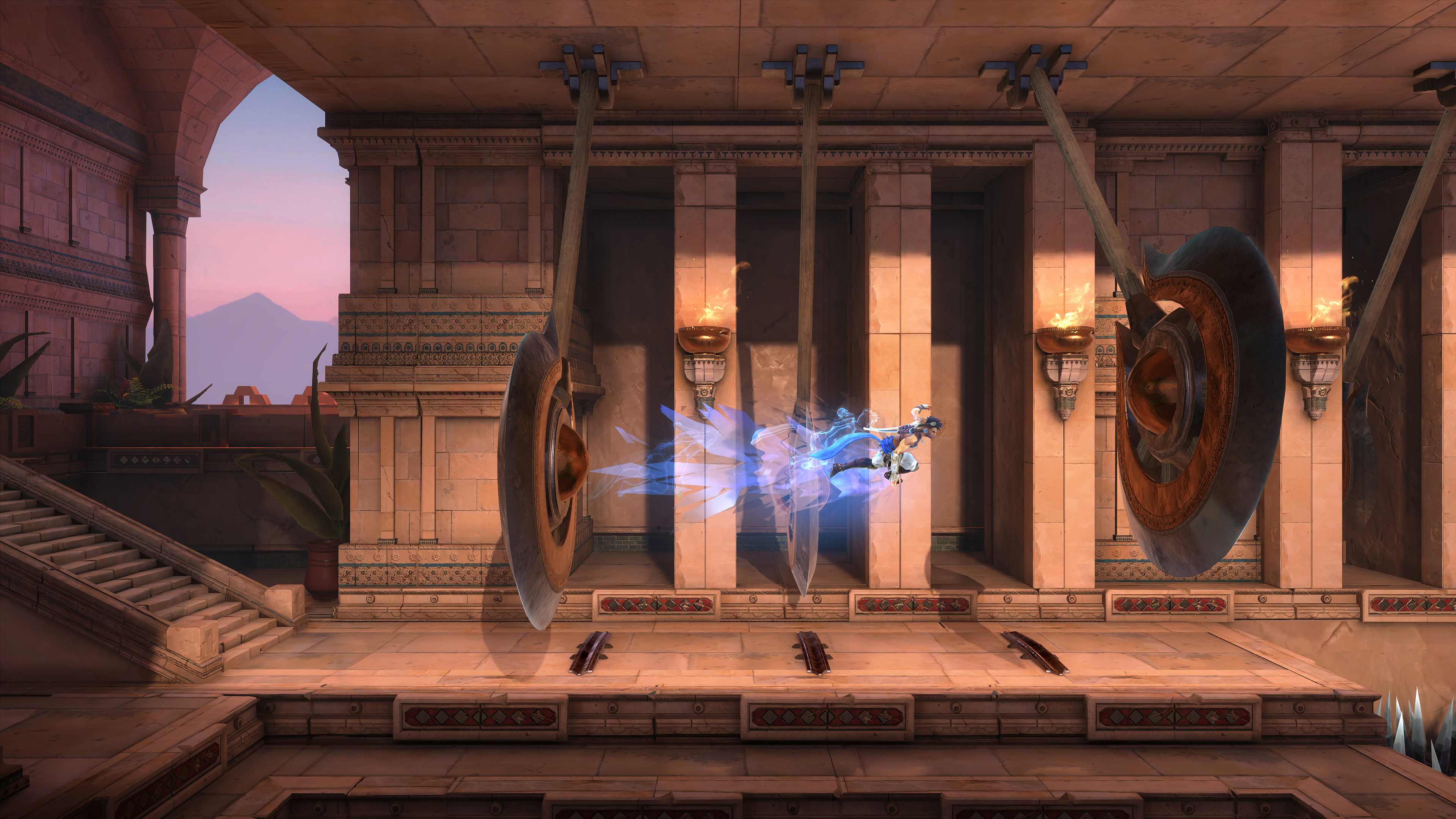
The swish and thuds of combats and the environmental traps are exactly what you’d expect from the game. When you execute a special move, there is a roar from the protagonist or the boss which is very Tekken or Dragon Ball Z and I like it. There is a background score when you enter a cutscene or key points in the game but for the most part, it is the environmental sounds that drown you when you traverse.
Verdict
Like I said in the beginning – if you love Metroidvania games like Metroid Dread, Ori and the Blind Forest, Guacamelee!, and more, then Prince of Persia: The Lost Crown is definitely for you! The story starts slow but then picks up and you will need to tackle some of the side quests to unravel the complete mystery surrounding Mount Qaf. Speaking of which, Mount Qaf is a fantastic area to explore. The combat is fluid, traversal is slick and the game will keep you at the edge of your seat for most of the gameplay experience! I beat the game in 22 hours and still have a few side quests and some hidden areas that need exploring. A must-play for Metroidvania fans!
Editor’s Rating: 9 / 10
Pros
- Fantastic challenging traversal
- Immersive and varied combat
- Varied environments
- Decent story
Cons
- Some audio glitches here and there
- You can only save your progress at the Wak Wak trees
More Info:
Developer: Ubisoft, Ubisoft Montpellier
Publisher: Ubisoft
Platforms: PS4, PS5, Xbox One, Xbox Series X, Nintendo Switch and Series S, PC
Reviewed on: PS5
We played a review copy of Prince of Persia: The Lost Crown provided by Ubisoft




